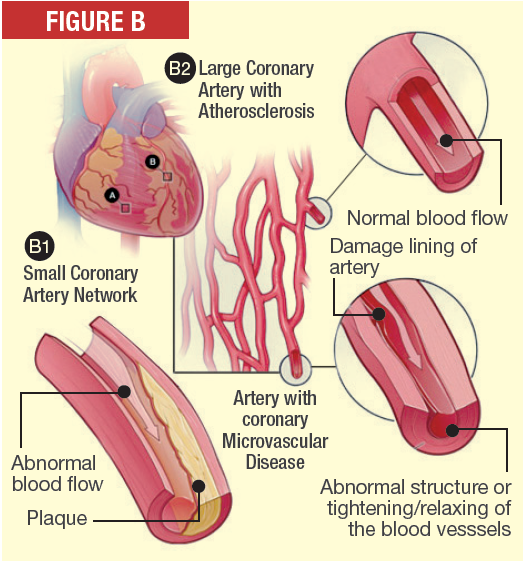3 Common Heart Diseases in Women
12 July 2019
It’s often misconstrued that heart disease afflicts mainly men. The fairer gender’s heart should not be taken lightly as all women face the threat of heart disease.
HOW DOES HEART DISEASE AFFECT WOMEN?
In Malaysia, cardiovascular disease (CVD) is the number one killer among Malaysian women for the past two decades, according to the National Heart Association of Malaysia.
Let’s take a look at some of the heart disorders that affect women:
CORONARY HEART DISEASE
Coronary artery disease or coronary heart disease (CHD) is caused by the gradual buildup of plaque (made of fat, cholesterol and other substances) on the inner walls of your coronary arteries. These arteries carry oxygen-rich blood to your heart. Over time, the plaque can harden or rupture. If this happens, two things can happen.
Hardened plaque narrows the coronary arteries and reduces the flow of oxygen-rich blood to the heart. This can cause chest pain or discomfort called angina. If the plaque ruptures, a blood clot can form on its surface. If serious, this can mostly or completely block blood flow through a coronary artery, resulting in a heart attack.

Figure A is an overview of a heart and coronary artery showing damage (dead heart muscle) caused by a heart attack. Figure A-A1 is a cross-section of the coronary artery with plaque buildup and a blood clot resulting from plaque rupture.
In addition to angina and heart attack, CHD can cause other serious heart problems. The disease may lead to heart failure, irregular heartbeats called arrhythmias, and sudden cardiac arrest (SCA).
CORONARY MICROVASCULAR DISEASE
Coronary Microvascular Disease (MVD) is a form of heart disease that affects the heart’s tiny blood vessels or arteries which are about 100 – 200 micrometers in diameter (a human hair is roughly 100 micrometers in diameter). This disease is also called cardiac syndrome X or non-obstructive CHD.
Microvascular disease is characterised by plaque deposited uniformly around the inside of the smaller vessels. In other words, the walls of the heart’s tiny arteries are damaged or diseased. Hence, the vessels then become stiffer and don’t expand well in response to the demands of exercise or other stresses.
In patients with coronary MVD, blood does not flow properly through these tiny blood vessels and the heart muscle may not have enough oxygen-rich blood, or oxygen may be cut off entirely to portions of the heart muscle. the walls of the heart’s tiny arteries are damaged or diseased.

Figure B-B1 shows the small coronary artery network (microvasculature), containing a normal artery and an artery with coronary MVD. Figure B-B2 shows a large coronary artery with plaque buildup. Women are more likely than men to have coronary MVD. Many researchers think that a drop in estrogen levels during menopause combined with other heart disease risk factors causes coronary MVD.
Although death rates from heart disease have dropped in the last 30 years, they haven’t dropped as much in women as in men. This may be the result of coronary MVD. Standard tests for CHD are not designed to detect coronary MVD. Thus, test results for women who have coronary MVD may show that they are at low risk for heart disease. Research is ongoing to learn more about coronary MVD and its causes.
BROKEN HEART SYNDROME
Is this a joke? Broken hearts are usually associated with pictures of cartoon drawing with a jagged line through it. In reality, broken heart can actually lead to cardiac consequences. Broken heart syndrome, also called stress-induced cardiomyopathy or takotsubo cardiomyopathy, can strike even if you’re healthy. (The term tako tsubo is Japanese for octopus traps that resemble pot-like shape of the stricken heart). Women are more likely to experience the sudden, intense chest pain which is a reaction to a surge of stress hormones. These can be triggered by emotionally stressful events.
Broken heart syndrome may be misdiagnosed as a heart attack because they both have similar symptoms and test results. In broken heart syndrome, a part of your heart temporarily enlarges and doesn’t pump well, while the rest of your heart functions normally or with even more forceful contractions. However, there’s no evidence of blocked heart arteries in broken heart syndrome, and most people have a full and quick recovery. Researchers are just starting to explore what causes this disorder and how to diagnose and treat it.
Conclusion
With increasing age, the risk of developing plaques in the arteries rises for both men and women. Women develop these plaques about 10 years later than men, but since women have a longer life span than men, the CVD burden is higher among women. The good news is that you can control many CVD risk factors. Lifestyle changes, medicines, and medical or surgical procedures can help women lower their risk for CVD. Thus, early and ongoing CVD prevention is important.
Source:
- National Heart, Lung and Blood Institute, U.S.
- Centers for Disease Control and Prevention
- The Society for Cardiovascular Angiography and Interventions (SCAI), U.S.
- American Heart Association






